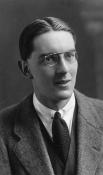
|
The King's School Canterbury |
Roll of Honour |
| Lieutenant Ernest Bertram NELSON | |
|
2nd Battalion 8th Gurkha Rifles attached to the 1st Battalion Date of birth: 30th November 1890 Date of death: 15th March 1917 Died of wounds aged 26 Commemorated on the Basra Memorial Panels 43 and 65 |

|
| He was born at Kensington on the 30th of November 1890 the younger son of Sidney Herbert Nelson, sawmill engineer, and Matilda Constance (nee Smart) later of Barton Mill House, Sturry Road in Canterbury. He was christened at St Barnabas Church, Kensington on the 7th of January 1891. He was educated at the Cliff House School, Southbourne and at the King's School Canterbury from September 1904 to July 1909 gaining a Junior Scholarship in December 1905 and a Senior Scholarship in July1908. On leaving school he went on to Corpus Christi College Cambridge on a Parker Exhibition where he gained a 3rd Class Classical Tripos in 1911 and a 3rd Class History Tripos in 1912. He was a member of the Cambridge University Officer Training Corps. In 1913 he went to work for Baring Brothers Bank in London from where he was posted to India to work for the Bank of Bengal in Calcutta. Also in 1913 he enlisted as a trooper in the Calcutta Light Horse. He was commissioned as a 2nd Lieutenant in the Indian Army Reserve of Officers on the 8th of January 1915 and was attached to the Queen Victoria's Own Corps of Guides, the 33rd Punjabis and later to the 2nd Battalion, 8th Gurkha Rifles. He was promoted to Lieutenant on the 8th of January 1916 and saw active service on the Indian Frontier as well as in France and Mesopotamia where he saw action in the capture of Baghdad and the siege of Kut. He was attached to the 1st Battalion of his regiment and became their Adjutant. At 7pm on the evening of the 13th of March 1917 the 1st Battalion 8th Gurkha Rifles received orders for a Brigade attack on enemy positions along both sides of the railway line at Mushada. At 7am the next morning they assembled at a point some five miles from their objective At 8am the Brigade deployed for the attack on the east side of the railway and began their move forward. At 8am, after a two mile advance, they stopped to receive final orders after which they crossed to the west side of the railway line under a culvert and were in position for the assault at 3pm. The 2nd Battalion Black Watch were to attack on the right of the Brigade with their right flank on the railway line. The 9th Bhopal Infantry were to be in the centre with the 1/8th Gurkha Rifles on the left of the attack with their left flank protected by cavalry. Captain Bernard Abbott MC was to lead the Gurkha left wing with Ernest Nelson leading the right wing of the four hundred strong Gurkha force. At 3.20pm the advance began and after about a half a mile the line came under "light and poorly aimed" shrapnel fire. When some 2,000 yards from the enemy line they came under rifle fire but this was ineffective. When they were 250 yards from their objective the enemy machine guns opened fire from a strongly held hill on the right of the attack. At 6.20pm the artillery fired a barrage on the hill and the Gurkhas rushed forward and carried the position with the enemy retreating without putting up any resistance. Both Captain Abbott and Ernest Nelson had been wounded in capturing the objective. At 7pm the advance continued and the railway junction at Mushada fell at midnight at the point of the bayonet with the enemy falling back in disarray. The following day the battalion received the news that Ernest Nelson had died of his wounds at a field hospital. He is commemorated on the war memorial at Corpus Christi College Cambridge. |
|
Back